In this guide, you dive deep into what are the three types of tapping in CNC Machine. You'll understand their history, design, and use. Your goal: Become knowledgeable in all things tapping.
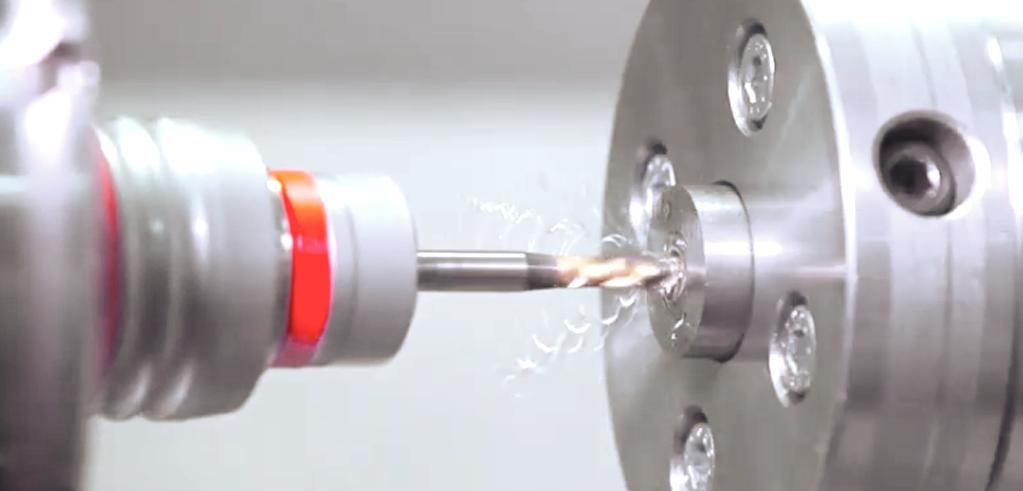
From ancient civilizations to the modern era, tapping techniques evolved significantly. Early craftsmen used primitive tools. By the 19th century, mechanized processes emerged.
Today, advanced machinery defines the industry. Throughout history, tapping's main types have remained: hand, machine, and form tapping.
Flutes guide chips out of the hole. Traditional taps have 2-4 flutes. Spiral fluted taps enhance chip evacuation. Different materials dictate the flute design. Flutes play a pivotal role in tapping efficiency.
Taps have sharp cutting edges. Precision is crucial. A tap's effectiveness relies on the cutting edge. With the right geometry, workpiece materials get threaded smoothly. The cutting edge remains paramount in ensuring quality threads.
Tap shanks vary in diameter. Different shank sizes accommodate distinct machines. Industry standards dictate shank dimensions. Correct shank size ensures stability during tapping.
The spiral angle directs chip flow. Varied angles cater to different materials. Steel often requires a low spiral angle. Aluminum, on the other hand, might need a higher one. Accurate spiral angles ensure chip flow consistency.
The tap's tip gets termed its point style. Taper, plug, and bottoming are common styles. Each has a unique threading depth. The right point style ensures accurate, deep threading.
Defines how deep the tap threads. Different materials require different thread lengths. Proper thread length ensures full-thread depth and optimal engagement.
This angle prevents friction. Taps have varied relief angles. Depending on the workpiece, correct relief angles minimize wear. Reduced friction ensures longevity and quality threading.
Helix angles guide chip removal. Steeper angles benefit soft materials. Shallower angles suit harder materials. Proper helix angles promote smooth, efficient chip evacuation.
In the domain of tapping, Taper Taps stand out. They form part of the three major types of tapping tools. Used initially for threading processes, their design suits beginners and experts alike. Every metalworker recognizes Taper Taps.
Their unique structure ensures efficient threading, even in challenging materials. In the industry, a standard Taper Tap will have specific characteristics. By understanding these, one grasps their value and importance.
Taper Taps display a consistent, gradual rise in diameter. Consequently, threads form smoothly over several rotations.
For any tapping job, beginning is crucial. Taper Taps excel here. Their design helps in effectively initiating the thread.
Their elongated tapering ensures better thread engagement. In essence, longer tapering means improved threading stability.
Thanks to their specific geometry, Taper Taps minimize friction. In turn, the life of the tap increases.
Achieving perfect alignment is often challenging. With Taper Taps, that task becomes simpler.
At the end of the tapping, finishing threads becomes essential. Taper Taps ensure clean, refined threads.
The tool’s strength is paramount. With Taper Taps, the chance of breakage diminishes significantly.
Removing chips while tapping is vital. Taper Taps provide superior chip clearance due to their design.
Taper Taps ensure that starting a threading job becomes effortless. Their design aids in this.
One of the nightmares in tapping is cross-threading. Taper Taps reduce that risk considerably.
Perfect alignment enhances the quality of threads. Taper Taps facilitate better alignment during operations.
Unlike some other taps, Taper Taps offer continuous cutting. Their design supports this feature.
For tasks involving shallow holes, Taper Taps become the preferred choice due to their design.
Sometimes, accessing tight spaces is necessary. Here, Taper Taps prove invaluable.
Over time, wear and tear can degrade a tap. With Taper Taps, this wear reduces, prolonging the tool's life.
For precision tasks, one must consider Taper Taps. Their design ensures accurate, clean threads every time.
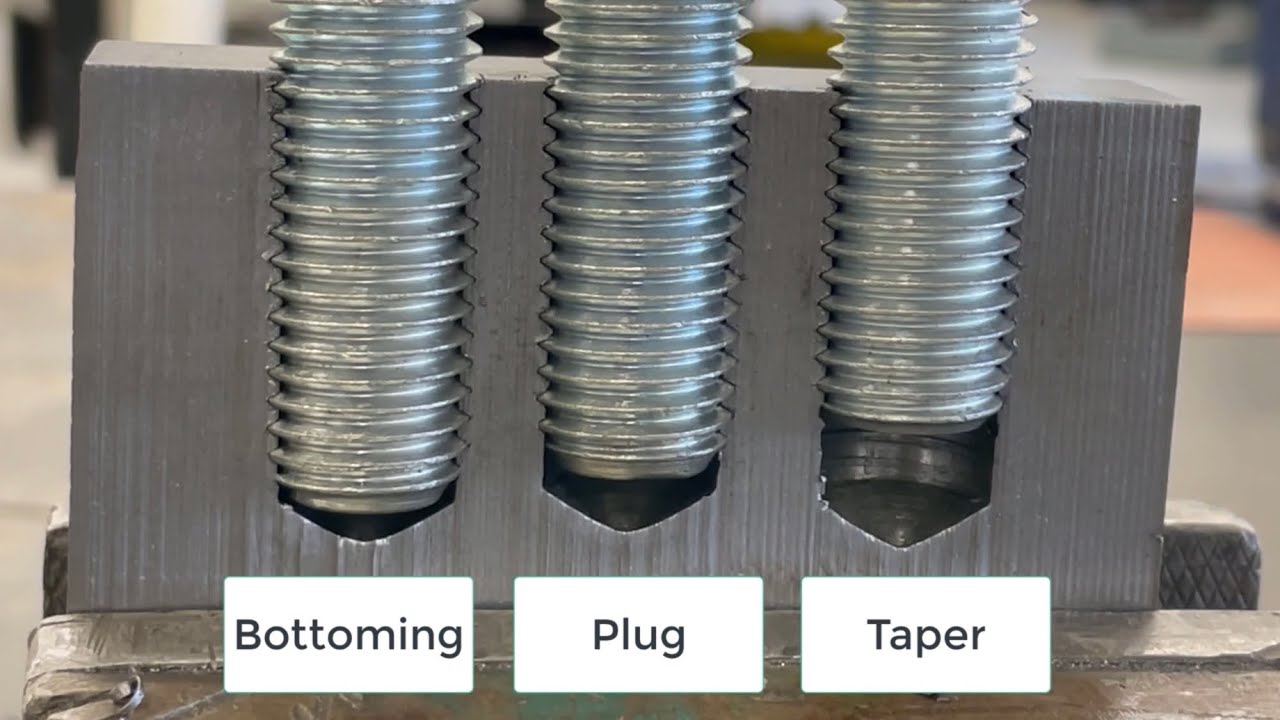
In CNC machining, tapping remains critical. Second, understand the essential role of Type 2 Plug Taps. Moreover, CNC machines require precision. Hence, tapping tools become indispensable.
Plug taps stand out. CNC professionals highly regard them. Knowing about them ensures optimal results. Recognizing plug taps fosters efficient operations. Modern CNC relies heavily on them.
Type 2 plug taps have a distinctive short taper. Consequently, initiation into holes becomes easier.
Not too long, not too short. Their length is intermediate. Therefore, they fit various scenarios in CNC operations.
Their threads are not overly fine. Thus, they handle many materials well. The medium coarseness assures solid grip.
One standout feature is their suitability for blind holes. Those holes that don’t go all through benefit immensely.
Unlike others, they possess fewer flutes. Fewer flutes mean faster chip removal. Swift operations follow naturally.
Their cutting edges exhibit rounded characteristics. As a result, smoother operations happen. There's less friction encountered.
Threads in these taps delve deeper. Subsequently, a firmer grip on materials emerges. CNC machining requires such depth.
Their build is commendable. Comprising high-quality metals, they assure users of higher strength. Durability is, therefore, a given.
Speed remains a primary advantage. With these taps, operations get completed in less time. Efficiency scales up remarkably.
Their usage isn't confined. Be it aluminum or steel; they work seamlessly. Their design ensures adaptability.
The depth isn't excessive. Threads don’t go overly deep. It prevents material damage. CNC materials remain intact.
Whether manually operated or in machines, they excel. Their design accommodates both methods.
Suitable for both hole types. Whether open or blind, these taps fit the bill. Versatility gets another nod here.
Made of top-grade materials, they last long. CNC professionals need not frequently replace them. In the long run, costs stay down.
Within the CNC machining realm, tapping stands as a pivotal process. Tapping creates internal threads in pre-drilled holes. Type 3 Bottom Taps, a subcategory of CNC taps, deserve special mention. Equipped for specific applications, these tools are designed for precision.
CNC machines rely on such taps for perfect hole threading, especially in challenging environments. Bottom Taps ensure accurate, seamless operations in CNC machinery.
A minimal taper ensures uniformity. Uniform threads mean stable, stronger connections. CNC machines benefit from such consistent, tapered taps..
The flat tip feature offers exactitude. CNC machining demands precision. Flat tips enable such precision, minimizing errors.
For finalizing threads, a final pass tap gets employed. CNC machinery requires this tap for optimal finishing.
Threading depth plays a pivotal role. In CNC machining, accurate depth ensures threads fit perfectly, eliminating mishaps.
Surface finish enhances appearance and functionality. A refined finish on CNC components results in smoother operations and less wear.
Interrupted threads facilitate easy tapping. In CNC, such threads prevent tool breakage, ensuring longevity.
Precision remains paramount in CNC. Bottom Taps provide a clean, exact finish, ensuring components fit seamlessly.
Consistency enhances reliability. With Bottom Taps, CNC machinery benefits from uniform threads, resulting in fewer disruptions.
Achieving the correct depth is crucial. Bottom Taps ensure CNC machines reach the desired depth, avoiding malfunctions.
Limiting chip evacuation reduces clogging. CNC machines, with Bottom Taps, experience fewer interruptions, ensuring smooth operations.
A clean profile is vital for efficient operations. Bottom Taps guarantee a clean thread profile in CNC tasks, reducing wear and tear.
Tapping close to the bottom of holes ensures thoroughness. For CNC, this means achieving full thread engagement.
Short engagements save time. In CNC processes, Bottom Taps allow for faster thread creation, increasing efficiency.
Completing blind holes stands as a unique challenge. With Bottom Taps, CNC machines can efficiently tap these holes to the very end.
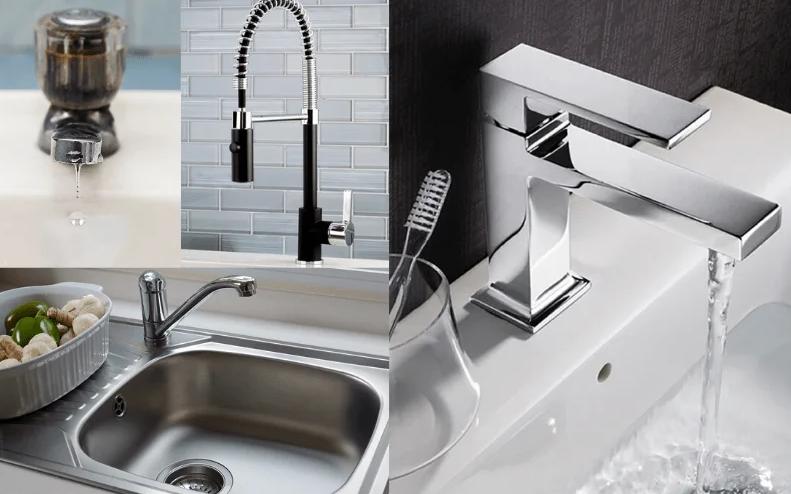
When dealing with CNC machines, understanding different taps proves vital. Compression valves stand out for their rubber washers which provide a tight seal. Over time, due to constant usage, these washers might wear out.
Distinguished by its single handle controlling hot and cold water flow, the ball type features a ball mechanism inside. One must ensure proper maintenance for optimum efficiency, especially in intricate CNC processes.
Offering a high level of precision, ceramic disks are common in modern setups. Two ceramic plates move against one another to control the water flow. Its precision matches that of CNC machines, providing accurate control.
With the ability to mix hot and cold water within a single tap, mixer taps are essential for controlling temperature. They're frequently seen in bathrooms and kitchens, ensuring accurate water temperature.
For those who prioritize compact designs, monobloc taps provide an excellent solution. In CNC processes where space is crucial, such taps which regulate temperature with a single spout are preferred.
Traditional in nature, pillar taps come in pairs. One tap controls hot water, while the other manages cold water. They provide separate flows, making them highly effective in particular applications.
Requiring only a quarter turn to start or stop water flow, these valves offer efficiency. Their quick action ensures minimal time wastage, crucial in fast-paced CNC environments.
Essential for mixer taps, the cartridge assists in regulating the temperature and flow of water. The cartridge's efficient design proves effective in maintaining consistency in water flow.
Wall-mounted taps optimize space and keep the surrounding area clutter-free. Especially in CNC workshops, where precision is vital, such streamlined designs are valued.
Designed for flexibility, pull-out sprays come with extendable hoses. They offer increased reach, making them ideal for tasks requiring flexibility and precision, much like CNC operations.
An innovation in tap design, infra-red sensors enable touchless operation. Especially in CNC environments where cleanliness and efficiency are paramount, such auto-parts taps ensure minimal contamination.
|
Feature/Tap Type |
Compression Valve |
Ball Type |
Ceramic Disk |
Mixer Taps |
Monobloc Taps |
Pillar Taps |
Quarter-Turn Valve |
|
Valve Mechanism |
Rubber Washer |
Ball |
Ceramic Disk |
Cartridge |
Cartridge |
Washer |
Quarter-Turn Disk |
|
Mounting Style |
Deck-Mounted |
Deck-Mounted |
Deck-Mounted |
Deck/Wall |
Deck-Mounted |
Deck-Mounted |
Deck-Mounted |
|
Handle Turns |
Multiple |
1/4 - 1/2 |
1/4 - 1/2 |
Varies |
Varies |
1 Full |
1/4 Turn |
|
Flow Rate (GPM)* |
2.2 |
2.5 |
2.5 |
2.2-2.5 |
2.2-2.5 |
2.2 |
2.5 |
|
Durability |
Moderate |
High |
Very High |
High |
Very High |
Moderate |
High |
|
Temperature Control |
Limited |
Good |
Excellent |
Excellent |
Excellent |
Limited |
Good |
|
Price Range ($)** |
$20-$100 |
$30-$200 |
$40-$250 |
$50-$300 |
$60-$350 |
$20-$120 |
$30-$220 |
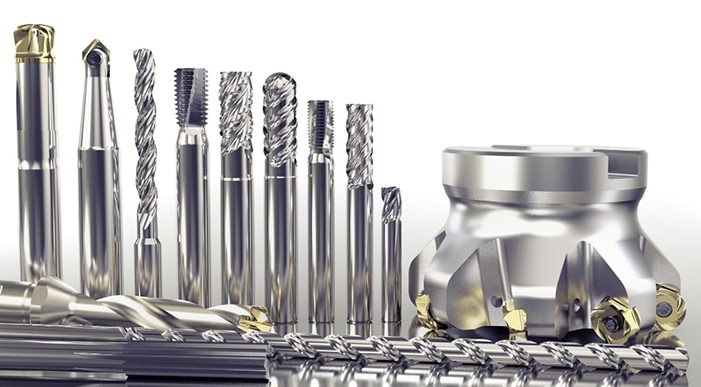
When discussing tapping in CNC machines, Carbon Steel, commonly abbreviated as CS, stands out. Known for its toughness, CS provides reliable tap durability.
Moreover, given its widespread availability, many industries prefer CS for routine tasks. Keep in mind, however, prolonged exposure can lead to rust.
Next up is High-Speed Steel or HSS. Manufacturers appreciate HSS for its ability to maintain form under heat. In high-velocity conditions, HSS ensures smooth tapping. Experts often choose HSS for higher performance and extended life.
Delve into Cobalt Steel, also termed as Co-Steel. Due to its heat resistance, many CNC operators use Co-Steel. Tapping becomes more efficient, especially in high-temperature situations. Recognize that Co-Steel ensures a superior finish every time.
Understanding Titanium Nitride (TIN) becomes essential. This material gets noticed for its surface hardness. For CNC operators, TIN guarantees reduced wear. By choosing TIN, expect a significant reduction in tap damage.
Carbide stands as another crucial material. In the realm of tapping, Carbide is renowned for its sturdiness. High durability ensures longer tool life. Those seeking to enhance CNC machine performance often look to Carbide.
SLC, or Solid Lubricant Coating, offers unique benefits. By reducing friction, SLC ensures smoother tapping. CNC machines equipped with SLC taps exhibit enhanced productivity. Remember, a seamless tapping experience results from the right lubrication.
Stainless Steel, SS for short, remains an industry favorite. Its corrosion resistance sets it apart. In moist environments, SS proves invaluable. For those concerned about rust, SS becomes the material of choice.
For increased hardness, turn to Chromium. Widely used in the CNC sector, Chromium offers enhanced wear resistance. Ensure flawless tapping by considering this robust material.
Lastly, explore Vanadium Alloy, abbreviated as VA. Known for high strength, VA stands up to rigorous tapping tasks. Given its resilience, many CNC professionals rely on VA. With VA taps, expect remarkable endurance and efficiency.
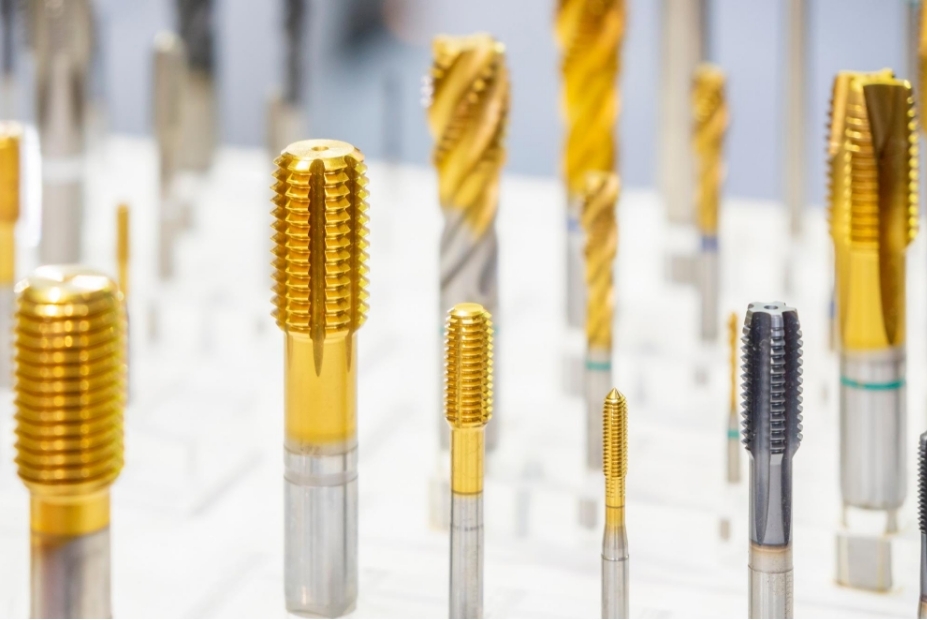
In CNC machines, die stock aids precision. Made of high-grade steel, die stock ensures accuracy. During operations, die stock holds threading dies firmly. Proper grip enhances tool life.
Enhanced tool life means cost savings. Precision remains uncompromised. The choice of die stock matters. Quality varies across manufacturers.
Tap wrench serves a critical role. CNC machines depend on it for tapping tasks. When threading holes, a tap wrench provides leverage. Leverage translates to accurate threads.
Different sizes accommodate various taps. Select based on tapping needs. Professionals prioritize tap wrenches. Recognize the value it offers.
Sometimes threads wear out. Thread restorer revives such threads. CNC machines benefit from restored threads. Optimal functioning relies on perfect threads.
Thread restorers come in multiple sizes. Choosing right is essential. A good restorer adds value. Every restorer promises durability and precision. Always choose wisely.
Threading operations need perfection. Die nut in CNC achieves that. Made of hardened steel, die nuts last long. Their main function: cleaning existing threads. Ensure threads remain crisp and clear. Professionals rely heavily on die nuts. Emphasize quality when choosing. Achieving threading excellence demands quality tools.
For smooth tapping, use tapping fluid. CNC machines value friction reduction. Less friction equals longer tool life. Longer tool life reduces costs. Many tapping fluid variants exist. Selection depends on material and operation. Ensure fluid compatibility with work material.
Broken screws disrupt operations. Screw extractors in CNC remove them. Designed for grip and torque, extractors work efficiently. Using them, broken screws become manageable. Different sizes cater to varied needs. Investing in a set proves wise. Screw extractors save both time and money.
Holding dies securely is vital. Die holders in CNC milling- machines ensure that. With an ergonomic design, die holders provide control. Accurate threading depends on control. Using a proper die holder is non-negotiable. Quality die holders stand the test of time. Precision remains consistent with reliable tools.
Sometimes threads sustain damage. Thread files in CNC restore them. With multiple pitches, they suit various needs. Repairing threads extends component life.
CNC professionals understand their importance. Ensure files are sharp and clean. Quality thread files promise longevity. Prioritize them for threading excellence.
Throughout this guide, you've learned about what are the three types of tapping in CNC Machine: Taper, Plug, and Bottom. From history to materials, the insight shared arms you with expertise. For more advanced tools and products, visit CNCYANGSEN. Your journey into the tapping world has just begun. Make the most of it.